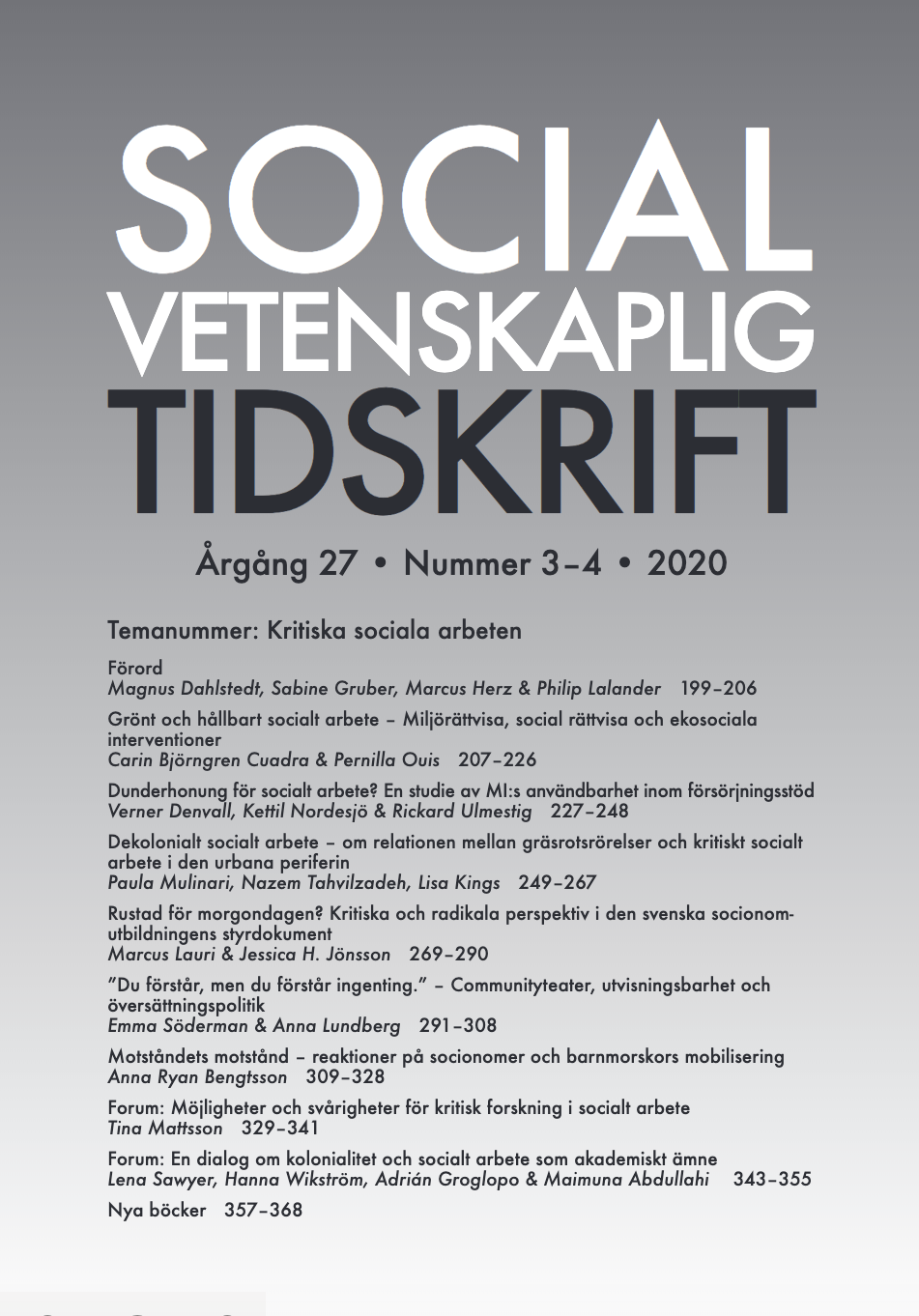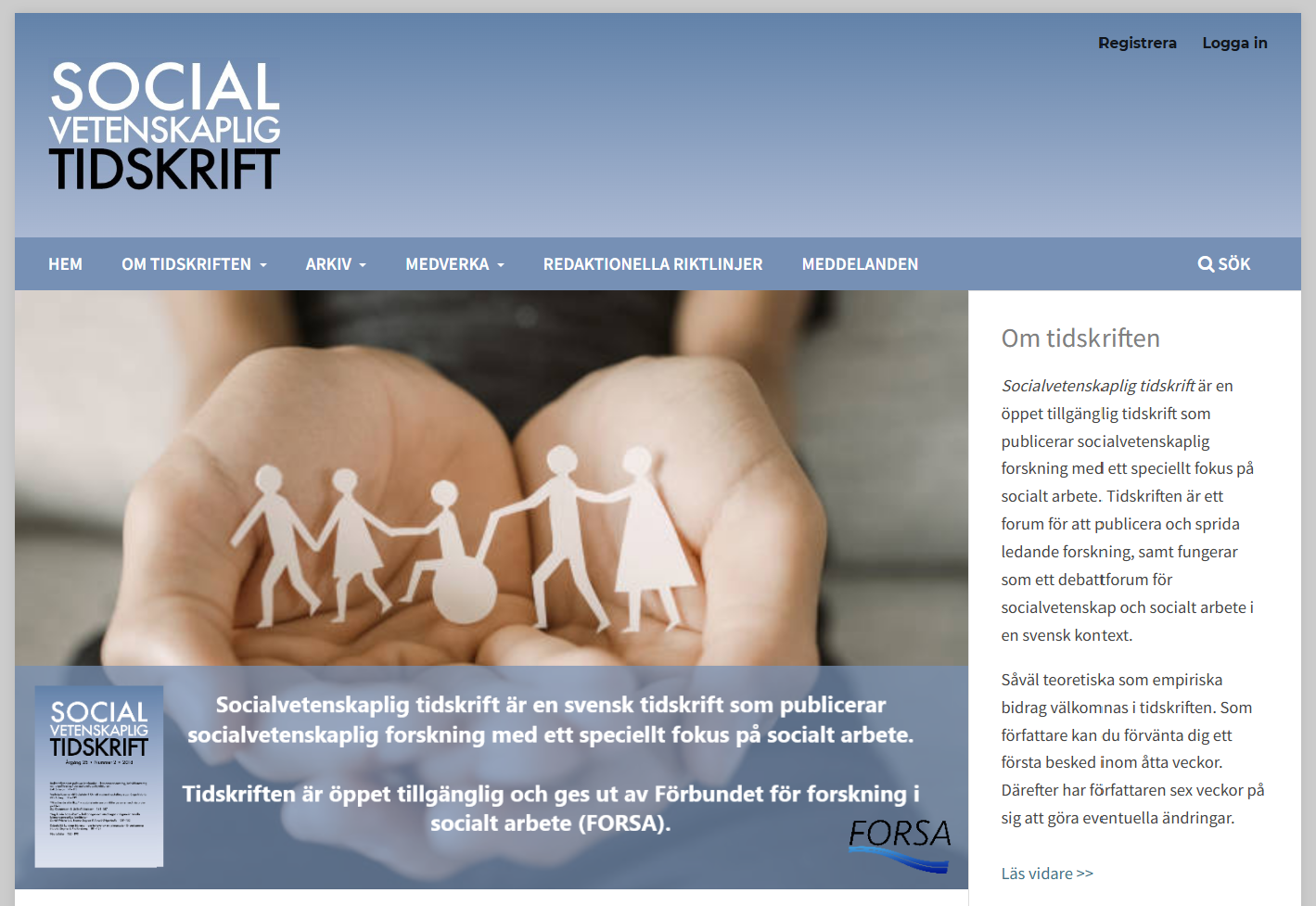Super-honey for social work?
A study of the usefulness of motivational interviewing in social assistance
DOI:
https://doi.org/10.3384/SVT.2020.27.3-4.3663Abstract
MI, motivational interviewing, is a counselling method for increasing a person’s motivation for behaviour change that is prevalent in social work. MI emphasizes building trusting social worker-client relationships and is presented as concrete and simple to follow. The benefit of MI is limited by actual opportunities for change through poverty, the labour market and health. The article aims to critically examine the usefulness of MI in connection with the handling of social assistance. It is based on a study of the use of an assessment instrument and of individual action plans (contracts) in a municipality where MI is a central tool. The study is based on analyses of documents, individual interviews and group interviews with staff as well as observations of meetings and training.The results show that MI has been integrated into a comprehensive implementation of other elements to standardize initiatives within income support. The client’s obligations are emphasized through a strong individual focus, although extensive efforts may be needed from surrounding actors. The action plans have inherent problems in terms of clarity and legal certainty. The authors argue that it is paradoxical to use a method based on alliances and collaboration in connection with conditional decisions. The use of MI becomes a commitment that lacks reciprocity and whose activation of self-technologies can be questioned.
Downloads
Published
How to Cite
Issue
Section
License
Allt material i Socialvetenskaplig tidskrift publiceras sedan 2022 (Vol 28 Nr 2) med omedelbar öppen tillgång (open access), under Creative Commons-licensen CC BY 4.0. Upphovsrätten till innehållet tillhör respektive författare.
Allt innehåll i tidskriften är fritt tillgängligt utan kostnad och får fritt läsas, laddas ned, kopieras, delas, skrivas ut och länkas. När innehållet används måste författare, källa och licens anges. Författaren kan fritt göra sin publicerade text tillgänglig på institutionella och internetbaserade arkiv, exempelvis sitt lärosätes digitala arkiv eller andra tjänster för detta.
Inga publiceringsavgifter tas ut vid publicering i Socialvetenskaplig tidskrift.


